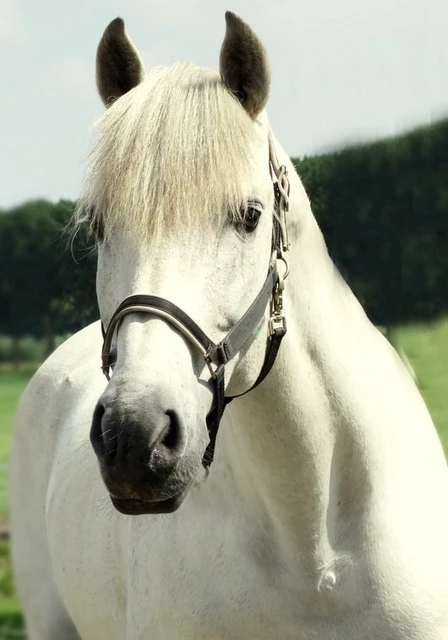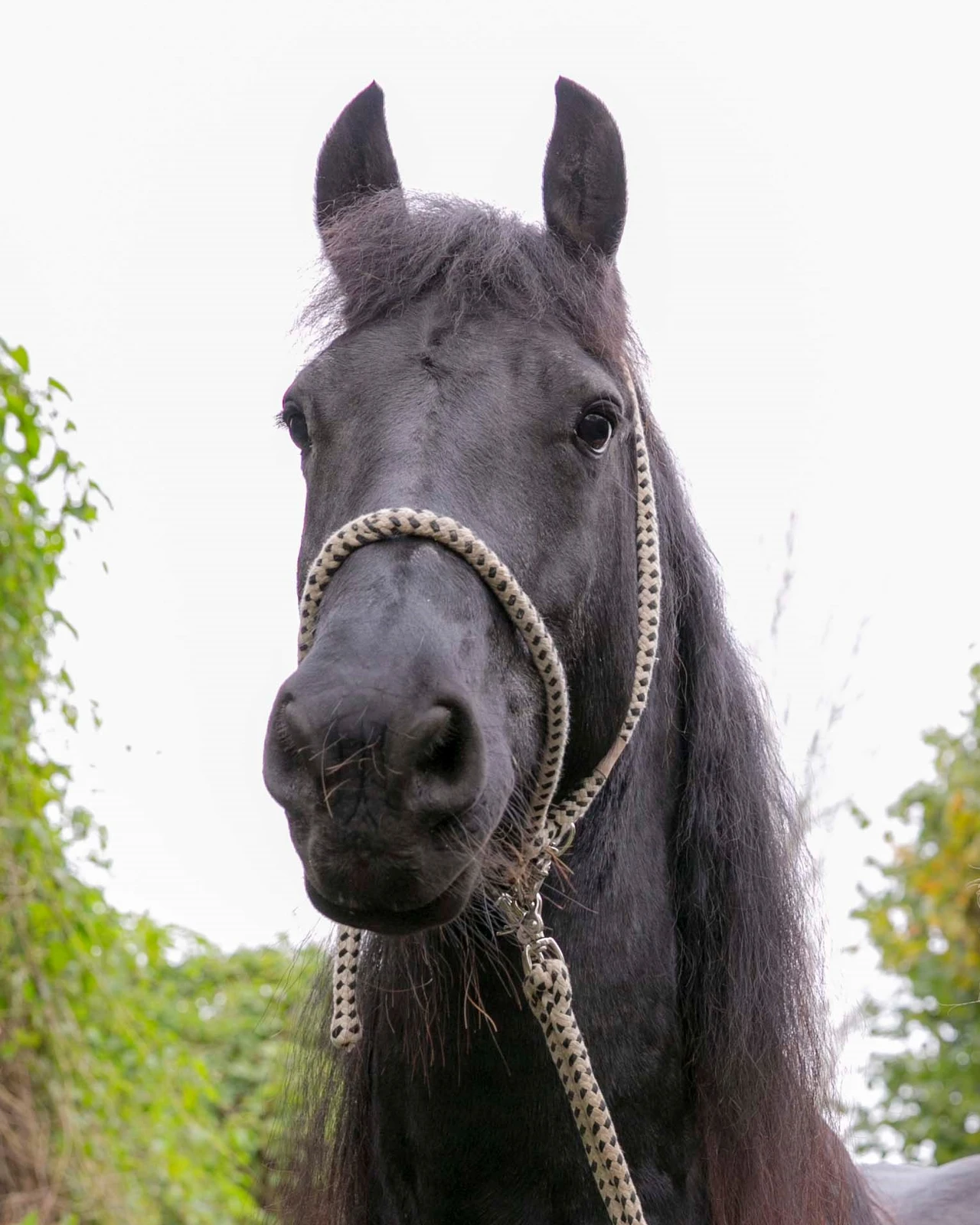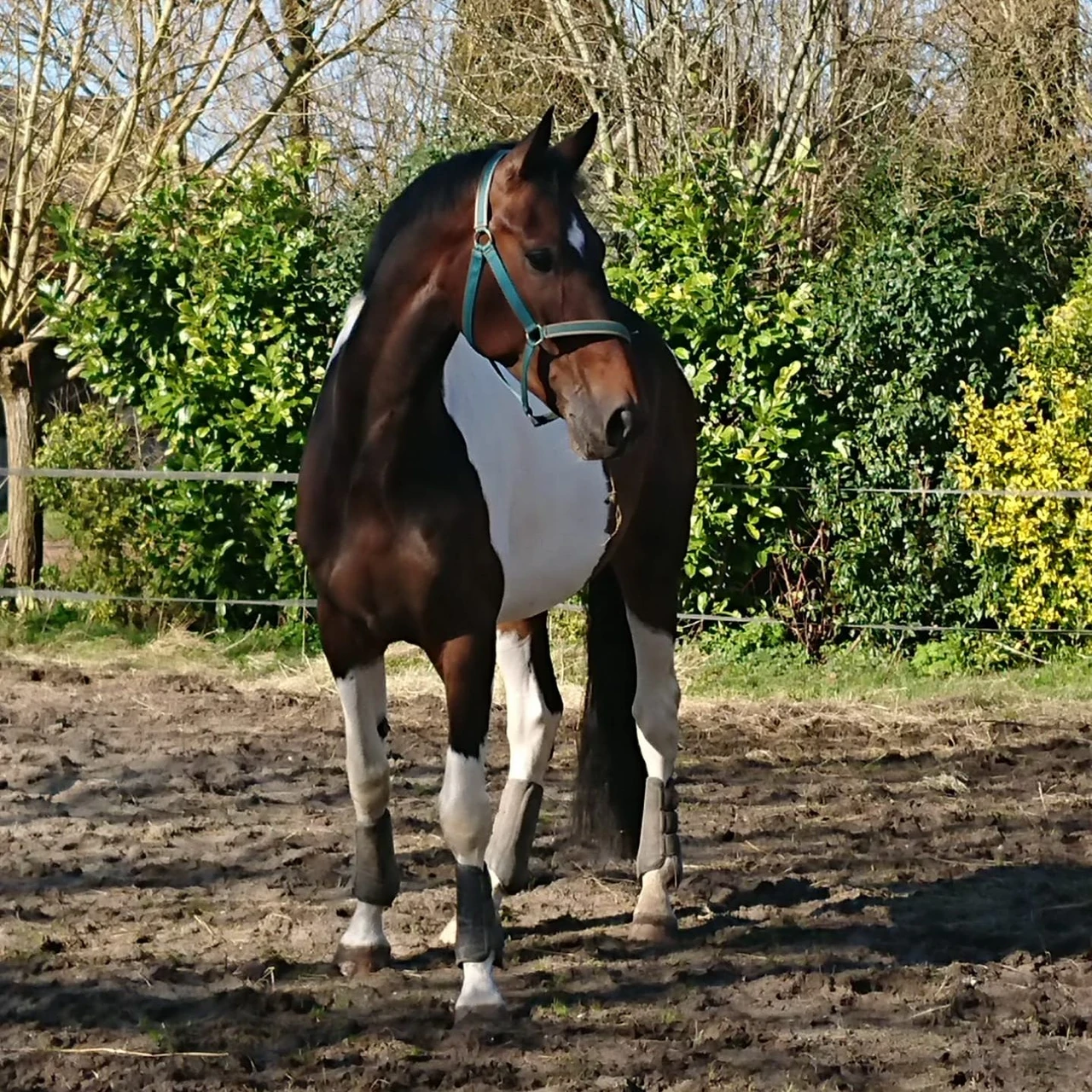Eef Gilbert
Equine Assisted CoachHelping you regain your footing.
“the impact of trauma is in the somatosensory self.”
— Dr. Bessel van der Kolk
My Story
My own story started at the end of my first career in academics. I had passionately worked as a researcher and activist in conflict areas in Central and West Africa for over a decade, when my partner died in Dakar on the 5th February 2018.
The week after that my 20 year old cat died, and the week after that my daughter left the house. In a mere three weeks my life was turned upside down. I was left alone, seemingly without a purpose and weighing a mere 50 kilos. A ghost of my former self.
I slowly made my way back to professional life with cognitive therapy. But my fire, my inner strength, power and purpose was gone. During the years that followed I lived but was hardly alive.
That is until I met Tygo, Eros and Valerie Elsing.
During the months of equine-assisted coaching I learned just to be again. No explanations, no long winded talks about what had happened, no analysing. Just being. Aware. Here. Now.
Slowly my body started to relax again. Ending the years of being stuck in Freeze or Flight mode. Slowly the fog lifted. Slowly life returned. And when it did, all I could think about was to retrain as an equine-assisted coach. The rest is history.
My Values & Beliefs
You can't talk yourself out of trauma
Trauma is stored in the somatosensory self and can only be released there.
mens sana in corpore sano
Embodying life in the here and now, feeling your way through safely within wise and healthy boundaries.
Trust and responsibility start with you
Being trustworthy and responsible to ourselves sets us up for life in a powerful and life-changing way.
My Approach
In my work I follow the horse and its interaction to and with the coachee(s). Horses can’t lie and it enables me to bypass any biases we as humans might hold to get to the core of the disturbed somatosensory self.
As a coach, I focus on the here and now rather than on the past, but past events may come to the surface. The body needs to remember so it can find its way out of the disturbance. This process can be quite intense, mentally as well as physically.
As a trained researcher I dig into the academic literature on the subjects we come across, to assist with proven practices to restore a healthy mind-body balance.


Eros
Eros is a 22 year old Andalusian horse, born in Spain.
His sensitivity and human orientation make him a perfect coach for all things hidden.
In addition, he is eager to learn, curious, honest, and reliable. That makes him a great colleague to work with.
Tygo
This is Tygo, a 16-year-old Frisian. Born and raised on the farm where the coaching sessions are held.
Tygo is quite a big horse which could be seen as overwhelming, but he is actually very tender. He has big shoulders to lean on and offers them willingly to those who need them. He is the big brother everybody needs.
This makes Tygo a very nice and reliable horse for coaching.


Mr. Bond
At only 6 years old, Mr. Bond is the youngest of the coaches, but with his 1m70 he is the tallest.
Mr. Bond is a beautiful and trained sport horse, with an innate sense of curiosity.
His playful spirit and sensitivity make him an excellent coach. Especially when things get heavy.
Bibliography
Bachi, K. (2012). Equine-Facilitated Psychotherapy: The Gap Between Practice and Knowledge. Society & Animals, 20, 4, 364-380, DOI: 10.1163/15685306-12341242
Bachi, K. (2013) Application of Attachment Theory to Equine-Facilitated Psychotherapy. Journal of Contemporary Psychotherapy, 43, 187–196). DOI: 10.1007/s10879-013-9232-1
Bachi, K., Terkel, J., & Teichman, M. (2012). Equine-Facilitated Psychotherapy for At-Risk Adolescents: The Influence on Self-Image, Self-Control and Trust. Clinical Child Psychology and Psychiatry, 17(2), 298–312. DOI:10.1177/1359104511404177
Baldwin, A.L.,Rector, B.K.; and Alden, A.C. (2018) “Effects of a Form of Equine-Facilitated Learning on Heart Rate Variability, Immune Function, and Self-Esteem in Older Adults. People and Animals: The International Journal of Research and Practice: Vol. 1 : Iss. 1 , Article 5. Available at: https://docs.lib.purdue.edu/paij/vol1/iss1/5
Bullard, D. (2014). Bessel van der Kolk on Trauma, Development and Healing. Psychotherapy. https://www.psychotherapy.net/interview/bessel-van-der-kolk-trauma
Chappell, K.K. (2014). Equine-Facilitated Life Coaching for Youth Leadership. [Master Dissertation, Prescott College]. Prescott College ProQuest Dissertations Publishing. Available on: https://www.proquest.com/openview/af11e8cbb381b6e2c6bafb6050f18fe1/1?pq-origsite=gscholar&cbl=18750
Esbjorn, R. J. (2006). When Horses Heal: a Qualitative Inquiry into Equine-Facilitated Psychotherapy. [Ph.D. dissertation, Institute of Transpersonal Psychology], Institute of Transpersonal Psychology ProQuest Dissertations Publishing. Available on: https://www.proquest.com/openview/271c1f1e939a2e1035a2aa635209232b/1?pq-origsite=gscholar&cbl=18750&diss=y
Ford, J. D., & Saltzman, W. (2009). Chapter 19: Family Therapy. In C. Courtois & J. D. Ford (Eds.), Treating Complex Traumatic Stress Disorders: An Evidence-Based Guide. (pp. 391-414). New York: Guilford.
Frame, D. L. (2006). Practices of Therapists Using Equine-Facilitated/Assisted Psychotherapy in the Treatment of Adolescents Diagnosed with Depression: a Qualitative Study. [Ph.D. dissertation, New York University]. New York University, New York. Available on: https://www.proquest.com/openview/3ae42ea5fb8d5f004ba7cbf99d863b98/1?pq-origsite=gscholar&cbl=18750&diss=y
Frisman, L. K., Ford, J. D., Lin, H., Mallon, S., & Chang, R. (2008). Outcomes of Trauma Treatment using the TARGET model. Journal of Groups in Addiction and Recovery, 3, 285-303. DOI: 10.1080/15560350802424910
Hallberg, L. (2008). Walking the Way of the Horse. New York: iUniverse.
Hamilton, T.; Burback, L.; Smith-MacDonald, L.; Jones, C.; Brown, M.R.G.; Mikolas, C.; Tang, E.M.Y.; O’Toole, K.; Vergis, P.; Merino, A.; Weiman, K.; Vermetten, E.H.G.J.M. & Bremault-Phillips, S. (2021). Moving Toward and Through Trauma. Frontiers in Psychiatry, 12. DOI: 10.3389/fpsyt.2021.779829
Jones C., Smith-MacDonald L., Van Veelen N., VanderLaan A., Kaneva Z., Dunleavy R.S., Hamilton T., Vermetten E. & Bremault-Phillips S.(2022). Therapist and Operator Experiences Utilizing Multi-Modal Motion-Assisted Memory Desensitization and Reconsolidation (3MDR) for Treatment of Combat-Related Posttraumatic Stress Disorder Amongst Military and Veteran Populations, European Journal of Psychotraumatology, 13:1, DOI: 10.1080/20008198.2022.2062996
Josephine McNamara. (2017) Equine Facilitated Therapy for Children and Adolescents: A Qualitative Pilot Study. Journal of Creativity in Mental Health, 12:4, pages 412-427. DOI: 10.1080/15401383.2017.1340215
Marvin, M., Cooper, G., Hoffman, K., & Powell, B. (2002). The Circle of Security Project: Attachment-Based Intervention with Caregiver-Pre-School Child Dyads. Attachment & Human Development, 4(1), 107–124. DOI: 10.1080/14616730252982491
Marzillier, J. (2014). ‘The somatic psychotherapies’, The Trauma Therapies. Oxford Academic. online edn, 1 May 2015 DOI: 10.1093/med:psych/9780199674718.003.0011
McCormick, A. V., & McCormick, M. D. (1997). Horse Sense and the Human Heart. Deerfield Beach: Health Communications. ISBN: 1558745238
Meinersmann, K. M., Bradberry, J., & Roberts, F. B. (2008). Equine-Facilitated Psychotherapy with Adult Female Survivors of Abuse. Journal of Psychosocial Nursing and Mental Health Services, 46(12), 36–42. DOI: 10.3928/02793695-20081201-08
Naste, T.M., Price, M., Karol, J. et al. (2018). Equine Facilitated Therapy for Complex Trauma (EFT-CT). Journal of Child & Adolescent Trauma, 11, 289–303. DOI: 10.1007/s40653-017-0187-3
Overbey, T.A., Diekmann, F., Lekies, K.S. (2023). Nature-Based Interventions for Vulnerable Youth: a Scoping Review. International Journal of Environmental Health Research, 33:1, pages 15-53. DOI 10.1080/09603123.2021.1998390
Roberts ,N.P., Lotzin, A., Schäfer, I. (2022). A Systematic Review and Meta-Analysis of Psychological Interventions for Comorbid Post-Traumatic Stress Disorder and Substance Use Disorder. European Journal of Psychotraumatology, 13:1. DOI: 10.1080/20008198.2022.2041831
Rosendahl, J., Gawlytta, R.,Strauß, B. (2023). Gruppenpsychotherapie zur Reduktion posttraumatischer Belastungssymptome. Trauma & Gewalt, 17:2, pages 92-105. DOI: 10.21706/tg-17-2-92
Ryan, S., Bacon, H., Endenburg, N., Hazel, S., Jouppi, R., Lee, N., Seksel, K. & Takashima, G. (01-05-2019). WSAVA Animal Welfare Guidelines for Companion Animal Practitioners and Veterinary Teams. Journal of Small Animal Practice, 60 (5), (pp. E1-E46). DOI: 10.1111/jsap.12998
Schultz, P. N., Remick-Barlow, G. A., & Robbins, L. (2007). Equine-Assisted Psychotherapy: a Mental Health Promotion/Intervention Modality for Children Who Have Experienced Intra-Family Violence. Health and Social Care in the Community,15(3), 265–271. DOI: 10.1111/j.1365-2524.2006.00684.x
Simpson T.L., Goldberg S.B., Louden D.K.N., Blakey S.M., Hawn S.E., Lott A., Browne K.C., Lehavot K., Kaysen D. (2021). Efficacy and Acceptability of Interventions for Co-occurring PTSD and SUD: A Meta-Analysis. Journal of Anxiety Disorders, 84, pages 102490. DOI: 10.1016/j.janxdis.2021.102490
Trotter, K. S., Chandler, C. K., Goodwin-Bond, D., & Casey, J. (2008). A Comparative Study of the Efficacy of Group Equine Assisted Counseling with At-Risk Children and Adolescents. Journal of Creativity in Mental Health, 3, 254–284. DOI: 10.1080/15401380802356880
van der Kolk, B. (2015). The Body Keeps the Score. Penguin Books, 464p. ISBN: 9780143127741
Yorke, J., Adams, C., & Coady, N. (2008). Therapeutic Value of Equine–Human Bonding in Recovery from Trauma. Anthrozoös,21(1), 17–30. DOI:10.2752/089279308×274038
